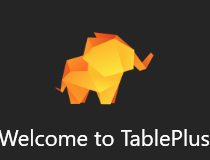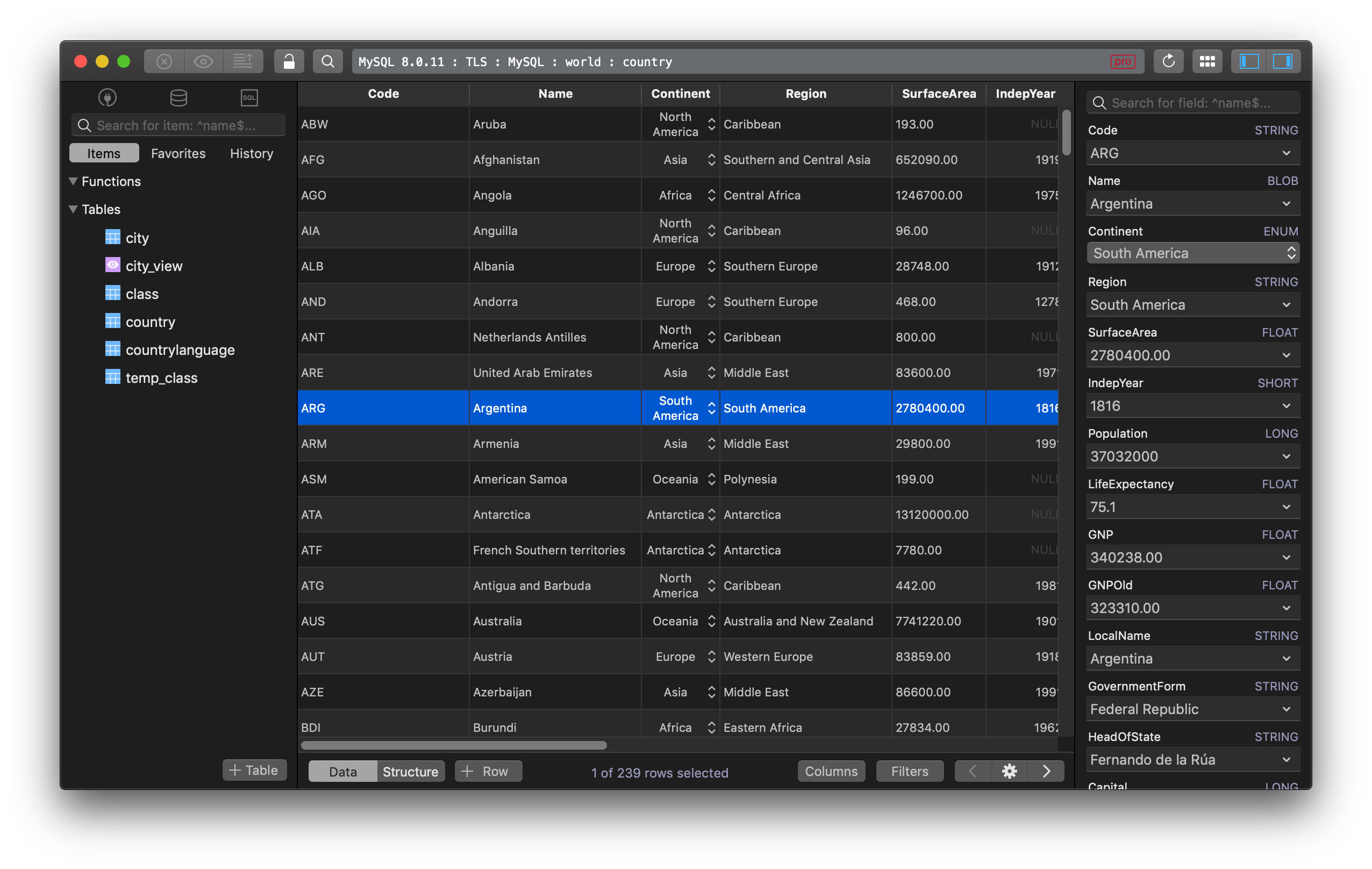

Nor does it need to involve using blocky software that costs an arm and a leg.and looks like it belongs in the 90s. Managing multiple databases can be time-consuming and require committing various usernames and passwords to memory, but it doesn’t need to be so arduous. Enabling TablePlus’s dark theme - which is available for all users with registered accounts - can be a big help for reducing some of that strain. Whether you’re staring at rows of data all day (well, night for a typical developer) or using a relational database tool, close computer work can be tough on the eyes. Sometimes a simple feature can make all the difference, which is why you should never underestimate something like dark mode. On the off chance you can’t find the field you’re looking for, you can use the app’s search (which includes autocomplete) and filter functions to track down whatever it is you need, quicker than any database diagram tool. Making changes to existing data is a breeze using inline editing, and feels just like editing a cell in a spreadsheet. You’re always just a couple of clicks away from being able to backup databases to, and restore them from, local storage using a. You can manually enter new connections in TablePlus but, if time is of the essence, you can also import all of the relevant information by copy-pasting the database URL.
Tableplus view sql print mac#
Welcome news if you’ve ever found the SQL editor Mac users have always dreamed of, only to realize that it can’t handle any other database types. No matter which type(s) of database you’re managing, the app will also review changes you make to code, highlighting syntax and possible errors. TablePlus offers a ton of compatibility so it suits any project that might come your way, from SQL variants like MySQL, SQLite, and Microsoft SQL Server through to Cassandra, Oracle, and Redis.

And because you’re not limited to just a couple of different languages or extensions, it might just be the only piece of database management software you’ll ever need. TablePlus’s clean and fresh UI, with its multiple tabs/windows and keyboard shortcuts, makes juggling multiple databases a piece of cake.
Tableplus view sql print plus#
Many existing database tools that claim to ease the pain are clunky and fail to address key issues that database managers regularly face, plus they can be costly to boot. For more information, see the SET command.Managing multiple databases can be a headache if you’re forever switching between many different accounts and types. This may give unexpected text wrapping in your display.

Decreasing or increasing the linesize with the SET LINESIZE command usually makes each column proportionally smaller or larger. To control the width of the data displayed, use the SET LINESIZE command.Ĭolumns output for the DESCRIBE command are typically allocated a proportion of the linesize currently specified. For more information, see the SET command. You can also display the line number and indentation of the attribute or column name when an object contains multiple object types. The DESCRIBE command enables you to describe objects recursively to the depth level set in the SET DESCRIBE command. When you do a DESCRIBE, VARCHAR columns are returned with a type of VARCHAR2. Precision of columns (and scale, if any, for a numeric column) Whether or not null values are allowed (NULL or NOT NULL) for each columnĭatatype of columns, for example, CHAR, DATE, LONG, LONGRAW, NUMBER, RAW, ROWID, VARCHAR2 (VARCHAR), or XMLType The description for tables, views, types and synonyms contains the following information: For more information on which privileges allow access to another table in a different schema, refer to the Oracle Database SQL Reference. Represents the table, view, type, procedure, function, package or synonym you wish to db_linkĬonsists of the database link name corresponding to the database where object exists. If you omit schema, SQL*Plus assumes you own object. Represents the schema where the object resides. Lists the column definitions for the specified table, view or synonym, or the specifications for the specified function or procedure.


 0 kommentar(er)
0 kommentar(er)
